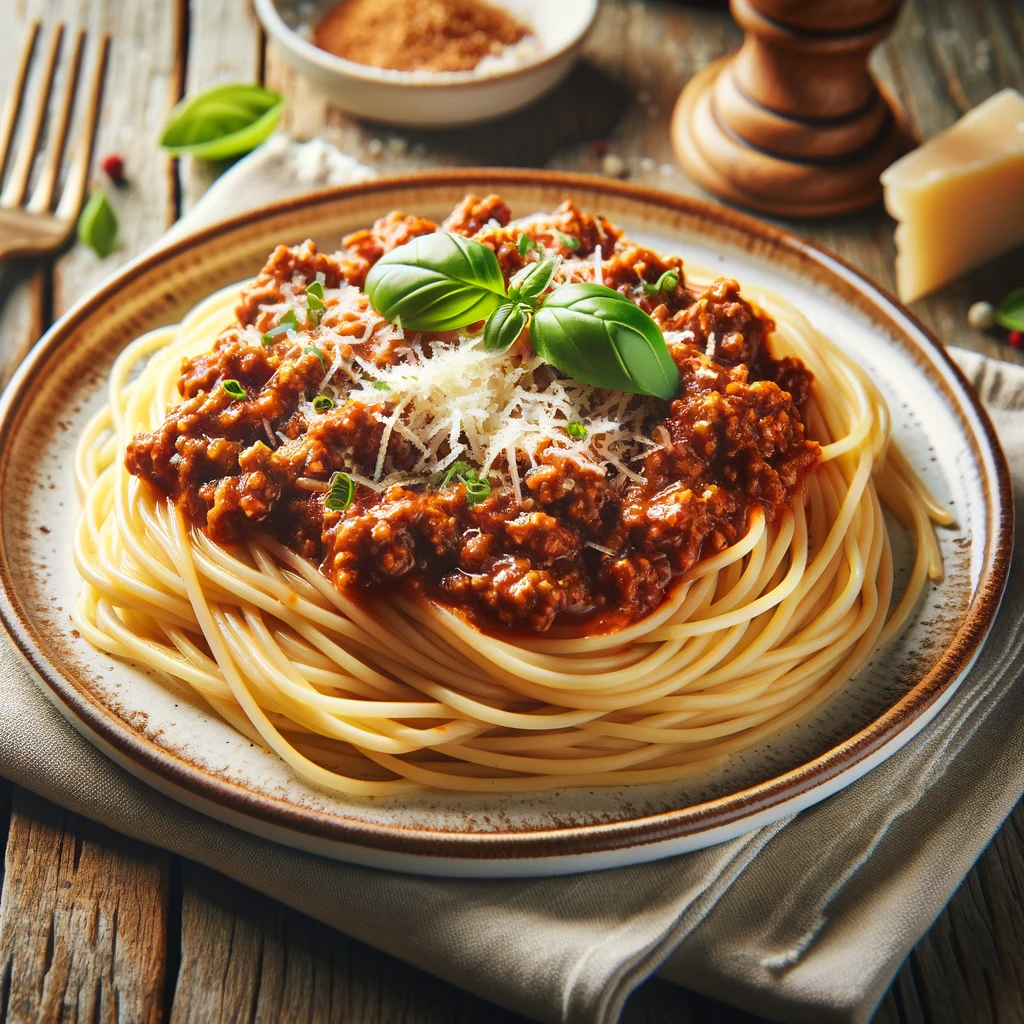
A good Bolognese sauce, traditionally known as ragù alla bolognese in Italian cuisine, is a meat-based sauce that originates from Bologna, Italy. It is known for its rich, complex flavors and hearty texture. Here are some key characteristics of a good Bolognese sauce:
- Rich and Flavorful: A well-made Bolognese sauce has a deep, rich flavor that comes from a combination of meat (often ground beef, sometimes mixed with pork), aromatic vegetables (like onions, carrots, and celery), and a robust tomato base. The flavors are well-balanced, with no single ingredient overpowering the others.
- Slow-Cooked and Tender: One of the hallmarks of a good Bolognese sauce is its slow cooking process. It is typically simmered over low heat for several hours, which allows the flavors to meld together beautifully and the meat to become incredibly tender and infused with the sauce.
- Texture: The sauce should have a thick, hearty texture, but not be too chunky. The meat should be finely ground, and the vegetables should be finely diced and cooked down until they are soft and meld into the sauce.
- Tomato Flavor: While tomatoes are an essential component, a traditional Bolognese sauce is not overly tomato-heavy. It uses just enough tomato (either in the form of paste, pureed, or diced tomatoes) to enhance the sauce without overwhelming the other flavors.
- Herbs and Spices: Aromatic herbs like oregano, basil, and bay leaves are often used to add depth to the sauce. Nutmeg is another common addition that provides a unique warmth to the flavor profile. The seasoning should be well-balanced, complementing the richness of the meat.
- Wine and Dairy: A splash of wine (typically red) is often used to deglaze the pan and add acidity and complexity to the sauce. Towards the end of cooking, a bit of milk or cream is sometimes added to create a richer, more velvety texture.
- Integration with Pasta: Good Bolognese sauce clings well to the pasta, typically a broader shape like tagliatelle or pappardelle, or classic spaghetti. The sauce should not be too dry or too liquidy but should coat the pasta evenly.
- Appearance: It usually has a rich, deep color ranging from reddish-brown to deep brown, indicating the thorough caramelization of the ingredients and the concentration of flavors.
- Aromatic: A good Bolognese sauce is aromatic, with the scents of cooked meat, vegetables, herbs, and wine creating an inviting and warm aroma.
A good Bolognese sauce is characterized by its rich, layered flavors, tender meat, and slow-cooked, hearty texture. It is a staple of Italian cuisine and a testament to the power of simple, quality ingredients cooked with care and patience.
Here’s a classic recipe for Spaghetti Bolognese:
Ingredients
For the Bolognese Sauce:
- Olive oil: 2 tablespoons
- Onion (finely chopped): 1 medium
- Carrots (finely chopped): 2 small
- Celery stalks (finely chopped): 2
- Garlic cloves (minced): 2
- Ground beef (or a mix of beef and pork): 500g (1 pound)
- Canned tomatoes: 800g (28 ounces) or 2 cans
- Tomato paste: 2 tablespoons
- Red wine: 1 cup (optional)
- Beef or vegetable broth: 1 cup
- Dried oregano: 1 teaspoon
- Bay leaves: 2
- Salt and pepper: to taste
- Fresh basil (optional): a handful
For Serving:
- Spaghetti: 400g (14 ounces)
- Grated Parmesan cheese
- Fresh basil leaves
Instructions
- Prepare the Vegetables: In a large pan, heat the olive oil over medium heat. Add the chopped onions, carrots, and celery. Sauté until the vegetables are softened, about 5-7 minutes. Add the minced garlic and cook for another minute.
- Brown the Meat: Increase the heat to medium-high and add the ground meat to the pan. Break it apart with a spoon. Cook until the meat is browned and no longer pink.
- Add Tomatoes and Seasonings: Stir in the canned tomatoes, tomato paste, red wine (if using), beef or vegetable broth, dried oregano, bay leaves, salt, and pepper. Bring to a simmer.
- Simmer the Sauce: Reduce the heat to low and let the sauce simmer gently, uncovered, for about 1 to 1.5 hours. Stir occasionally, adding a bit of water or more broth if the sauce gets too thick. Taste and adjust the seasoning as needed. If you have fresh basil, add it towards the end of cooking.
- Cook the Spaghetti: While the sauce is simmering, bring a large pot of salted water to a boil. Cook the spaghetti according to the package instructions until al dente. Drain and set aside.
- Serve: Serve the hot Bolognese sauce over the cooked spaghetti. Garnish with grated Parmesan cheese and fresh basil leaves if desired.
- Enjoy: Your Spaghetti Bolognese is ready to be enjoyed!
Tips
- Wine Choice: If using wine, a dry red like Chianti or Merlot works well.
- Simmering Time: Longer simmering times can enhance the flavor. If you have the time, letting it simmer for a couple of hours can deepen the taste.
- Meat Options: Some recipes use a mix of pork and beef for added flavor.


